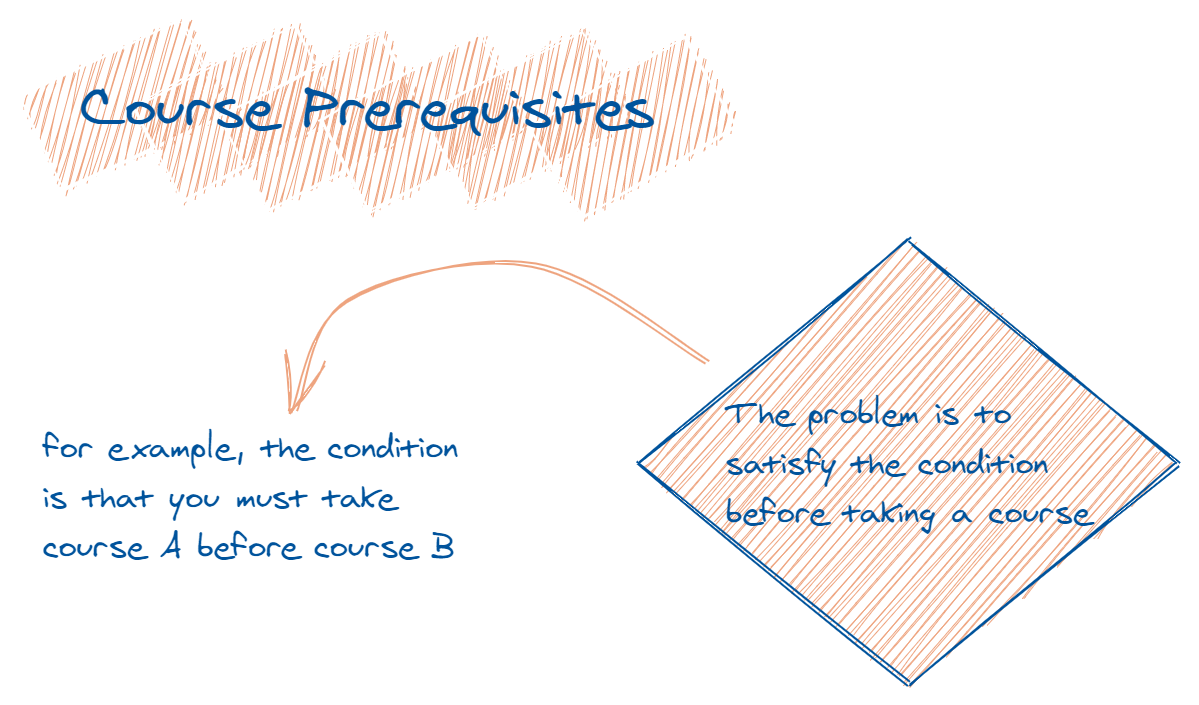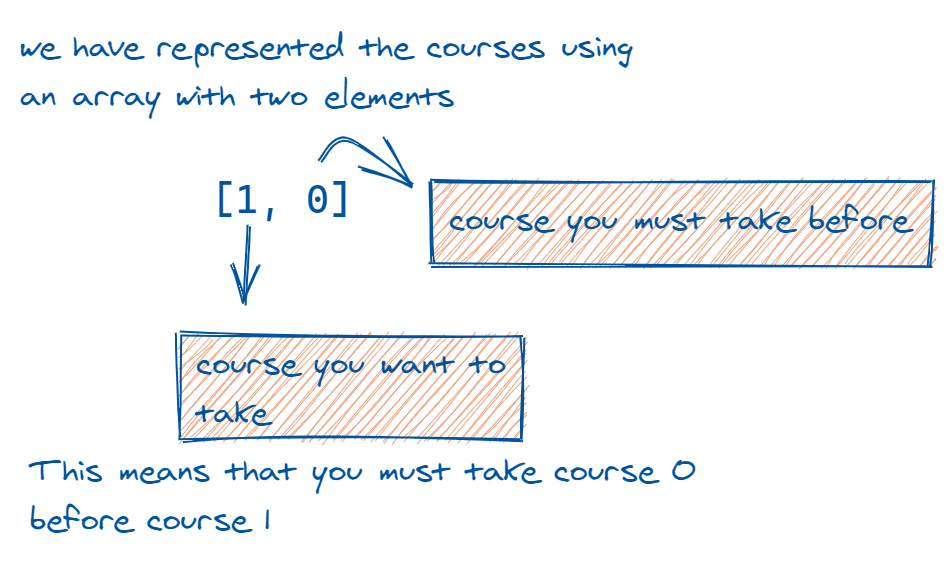Good evening! Here's our prompt for today.
Here's a classic challenge that comes up in real-life interviews surprisingly often. Interviewers like it as a way to assess your ability to find the right data structure for a non-obvious and non-trivial use case.

The prompt is as follows: you're a university student currently trying to plan their schedule for the following semester. There is n number of courses that you'll need to take to stay on track for graduation.

Of the n courses, several have prerequisite courses that you'll need to take beforehand. This requirement is defined using an array with two elements. A prerequisite pair in the form [course, prerequisite] such as [4, 3] means that you need to take course 3 before course 4.
1n = 3
2preReqs = [[1, 0], [2, 1]]
3// You need to take course 0 before 1, and 1 before 2,
4// but that is an appropriate order.
5// Running areAllCoursesPossible(n, preReqs) would return true.However, sometimes the prerequisite pairings are not possible-- this will prevent you from staying on track! As an example, if we add an additional prerequisite requirement that you need to finish 2 before 0, it wouldn't work:
1n = 3
2preReqs = [[1, 0], [2, 1], [0, 2]]
3// This is impossible because you can't finish 2 before 0,
4// since you need to finish 1 before 2, and 0 before 1.In the above, an order of 0 -> 1 -> 2 or 2 -> 1 -> 0 would not fulfill the requirements, so areAllCoursesPossible(n, preReqs) would return false.
Given n and a list of prerequisite pairs, can you write a method to determine if it is possible to take all the courses? Hint: what are the conditions under which a prerequisite setup is impossible?
Constraints
- Number of possible courses <=
100000 - Number of prerequisites <=
100000 - The prerequisites array will always contain the value >=
0 - Expected time complexity :
O(V+E), whereVare the courses andEare the prerequisites - Expected space complexity :
O(V)
Try to solve this here or in Interactive Mode.
How do I practice this challenge?
xxxxxxxxxx 'PASSED: assert.equal(false, cs.areAllCoursesPossible(3, [[1, 0], [2, 1], [0, 2]]))'var assert = require('assert');class CourseSchedule { areAllCoursesPossible(numCourses, prerequisites) { // implement this method return true; } dfs(courseIdx, onThePath) { // might be helpful }}class Graph { constructor() { this.adjacencyList = new Map(); this.verticesCount = 0; } addVertex(nodeVal) { this.adjacencyList.set(nodeVal, []); this.verticesCount++; } addEdge(src, dest) { this.adjacencyList.get(src).push(dest); this.adjacencyList.get(dest).push(src); // push to both adjacency lists }Here's how we would solve this problem...
How do I use this guide?
Access all course materials today
The rest of this tutorial's contents are only available for premium members. Please explore your options at the link below.


